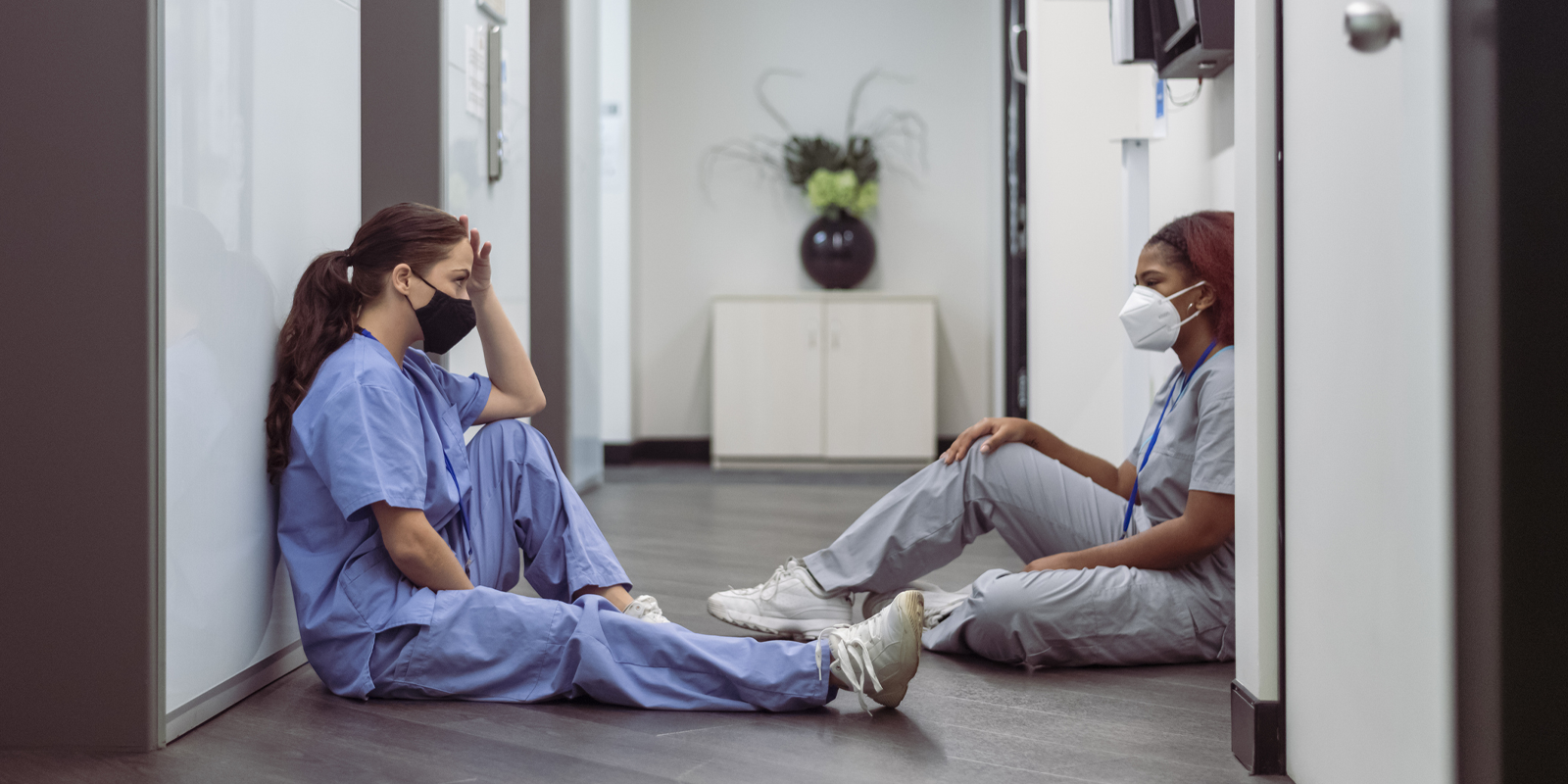As many households ramp up their holiday spending this year and more people plan to travel between Christmas and New Year’s, the country seems headed back to its old, pre-pandemic self. But for many health care workers who were on the front lines of the COVID-19 pandemic, their old self still seems out of reach.
For Victoria Navarro, a registered nurse at Kaiser Permanente Downey Medical Center in Downey, California, the burnout and trauma of the last few years have left emotional and mental scars that have yet to fully heal.
“I still don’t feel like myself,” says Navarro, a member of the AFSCME-affiliated UNAC/UHCP (United Nurses Associations of California/Union of Health Care Professionals). “Christmas was always a good time for me, but lately I feel like I’m just going through the motions, instead of enjoying my time.”
Navarro is hardly alone. A report published by the Centers for Disease Control and Prevention (CDC) in October shows that symptoms of poor mental health increased more during the pandemic for health workers than for other worker groups. Compared to 2018, before the pandemic began, health workers in 2022 reported higher levels of poor mental health days, burnout and harassment.
The report found that in 2022:
- Nearly half of health workers (46%) reported often feeling burned out, up from 32% in 2018;
- More than double the number of health workers reported harassment at work than in 2018;
- 44% of health workers intended to look for a new job, up from 33% in 2018.
A similar report published by UNAC/UHCP in October 2021 found that more than 70% of members surveyed reported experiencing anxiety and burnout, and nearly half were suffering from insomnia and depression.
Navarro, who works in the emergency room, says there were issues with short-staffing and burnout even before the pandemic began. She has been a nurse for 20 years and has worked in emergency rooms for the last 14, but nothing could have prepared her for what came next.
“When the pandemic hit, a lot of nurses left,” she recalls. “A lot of my co-workers decided, ‘This is not for me,’ and they moved to less acute floors or went into case management or retired altogether. Suddenly, the experienced nurses were gone.”
As a result, instead of 12-hour shifts, three days a week, Navarro and her remaining colleagues were asked to work 16-hour shifts and come in on their days off. Many of the COVID-19 patients they were seeing were adults in their 30s and 40s who’d never been sick but were now too weak to even move.
“I remember a 34-year-old male that I had to spoon-feed water because he couldn’t drink on his own,” Navarro says. “He was a well-built man, but he was too weak to drink, let alone eat. He worried about his kids. It was heartbreaking.”
The hospital posted a psychiatrist in the emergency room to help the staff, but with nearly double the patient load for every nurse — five instead of the usual three per nurse — the staff was so overworked, Navarro says, that “we never had time to go see the psychiatrist during our shift.”
“A lot of us noticed that when we got together for lunch or for a break, we wouldn’t talk to each other anymore,” Navarro says. “We looked like we were zombies. We were no longer trying to communicate with each other because it was too hard to do it. People kept telling you, ‘You’re a hero! You’re a hero!’, but it didn’t feel like that at all. I was completely withdrawn.”
Eventually, Navarro began seeing a private psychiatrist, who diagnosed her with depression and anxiety and was able to take her off work — but only for two weeks. She took medication for her symptoms and felt better, but today, nearly four years after the pandemic began, she knows she still has a ways to go.
Just last month, she says, a 5-year-old girl was brought into the emergency room with hypothermia and a very low hemoglobin count, and she died after doctors and nurses did everything they could to save her life. And yet, Navarro adds, she felt she couldn’t grieve.
“The child died, and I had no tears,” she says. “My emotions were capped. … This is how it’s been for all of us. When somebody died, we never had a chance to take a deep breath because we always had to go to our next patient.”
While it’s clear that only by fully staffing workplaces will health care workers begin to feel relief, the CDC report shows what employers can do now to help promote staff well-being. That includes allowing workers to participate in workplace decisions, improving trust between management and workers, and training managers on mental health awareness.
